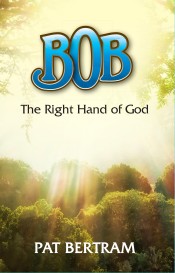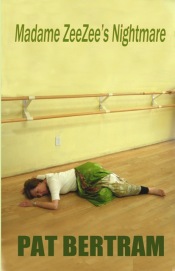In my Suspense/Thriller Writers’ group on Facebook, one author asked, “How many subplots in a book are acceptable?”
Most of the writers thought that one or two subplots was enough, but horror writer Rob M. Miller gave a wonderful response that I’m reposting here. Considering the ephemeral nature of Facebook, in a couple of days his comment would have disappeared into the great maw of FB, and I didn’t want it to be lost forever. Rob said:
A broad question begging for a broad answer, of which there is only one that’s truly honest, even if horribly vague:
As many as the author can competently handle.
In the hands of a master, there can be many subplots, even into the double and triple digits, as can be read in the incredible work Shogun by James Clavell, or The Hobbit by Tolkien.
But to have a masterful work, there doesn’t have to be many in order to keep the reader hooked and hungry for — One…More…Chapter!
Wiki Answers says that “subplot is like the secondary plot of your story. It means additional plot(s) to a movie, show, book, or play that help contribute to the main plot. Subplots are less important than main plots.”
 In Star Wars you have the following plot or through line: Ragtag rebels work to stop a space station from cementing the evil emperor’s hold on the galaxy.
In Star Wars you have the following plot or through line: Ragtag rebels work to stop a space station from cementing the evil emperor’s hold on the galaxy.
That’s the plot. The spine. It’s the elevator speech, as well. Short, simple, and concatenates the story. But it’s also a bit simple — isn’t it? — even for Star Wars, which is not the most complex of stories.
How many subplots are in Star Wars?
I concede the number could be argued, but c’mon, fellow writers, there is more than one, and there is more than two. The mentoring of Luke, Chewie and Han as wanted criminals (smugglers), the romantic tripod of Leia, Han, and Luke, and in my view, even more.
Subplots, mini plots, lines of suspense, how many characters there should be and the proper ratio of bad to good. These things can all be made as complicated as desired, or as complicated as hell even when not desired.
The key is to simplify the approach, at least in one’s head, like with the through line given for “Star Wars.” The final product might be beautifully written and wonderfully controlled as an epic master work, such as Martin’s Song of Fire and Ice series, or Tolkien’s set of Hobbit adventures, or a chunky Tom Clancy novel . . . or it can be an equally wonderful, but streamlined story. There are no rules, save for don’t write boring. There are conventions, tropes, schemes and paradigms, some of more value than others.
What to do?
Author, know thyself, and then stretch 10%, putting down a tale as best you can, whether outlined or not, large-staged or mini, small cast or jam-packed.
If you want “one” of something, go for it. Shorts, for example, are a form that generally works better when they are a drag race from point A to B, and which end in a singular climax — but I’ve read exceptions. Perhaps your idea is an exception, too. But don’t be afraid of two, or forty-two. Keep track of stuff . . . be forgiving when it turns out that Hemingway was write about first drafts being shite, and then, like a conductor or architect, you can make sure that all the balls are being juggled properly.
***
With a love for reading and writing that started in his youth, Rob has traveled far to get to the place where he can now concentrate on breaking into the horror market.
Born and raised in the “micro-hood” of Portland, Oregon, he grew up as the oldest of three children, the son of a book-lover and a book-hater.
It was after two years of free-lance stringer work, and a number of publishing credits, that he tired of non-fiction and decided to use his love of the dark, personal terrors, and talent with words to do something more beneficial for his fellow man -– SCARE THE HELL OUT OF HIM.









December 2, 2012 at 7:41 pm
I have so many subplots and subsubplots in Light Bringer, I’m not sure I can count them all. About halfway through the book, I got entangled in all those threads, and the only way to find the way to plait them altogether was to do a story board. I wrote a brief synopsis of each scene on a card, and kept playing with them like puzzle pieces until they all fell into place.
December 2, 2012 at 7:54 pm
Here’s a writer after my own heart! Thanks for posting his response, Pat.
December 2, 2012 at 7:55 pm
Rob is a smart guy and knows what he is doing. I always enjoy his comments.
December 3, 2012 at 5:01 am
i can see why.
December 2, 2012 at 9:59 pm
Some good points made here by Rob. Mind you, getting to know thyself I always thought was one of the main reasons, other than the pleasure of it, to write anyway.
‘As many as the author can competently handle’ is vague but it does make sense. If the plot is the spine, and you have a lot of subplots running, then you need to make sure you have a strong enough spine to take all this added weight.
I come from the movie generation and oft times think in terms of film even when I’m working out subplots for some novel. One thing a movie has to do is get back to the main plot to reinforce it or it will bend, buckle and snap. Every subplot needs to, at some point in its existence, take you back to the main plot. It can’t just float in the middle of your novel disconnected. If you can’t link up all your subplots to the main spine then maybe you do have too many subplots going or too many for you to competently handle.
I once sat in on a film script being examined by a group of what I now consider to be less than professional. The film was based on the adventures of two truck drivers on rthe road. In the original script what we know about the wife and children of one and the girlfriends of the other was from the points of view of the drivers only. To me this gave the viewer plenty of subplots and at the same time the pace was good.
Then of course you had these politically correct women who insisted that the women in the story should have their own recollections and the same can be said for the children. What the poor fellow came up with after that meeting was a convoluted mess that, instead of having a running time of one and a half hours, would run instead to close on four hours. Very few movies are capable nowadays of capturing the interest of readers for that length of time and very few movies that long with plat in cinemas anyway.
I told the guy he had something that basically would no longer work because he had well and truly taken too much on board. I also told him if he shaved a bit here and there he would have three pretty good movies with enough subplots to spice things up or a min-series for television. What’s more, he needed them to be three pretty good movies or a mini-series rather than this monstrous thing he now had that couldn’t stand because of all that it carried.
I don’t know if he took my advice or not. I was not happy with the way the others critiqued this poor fellow’s work and have never been back to that group. Three meetings with that group were enough for me.
Sometimes the writer and the reader can’t or shouldn’t know everything.I always liked the way The Saint retained something of the mystery man well into the 1950s in short story, novel and also film. The Saint 1997 film starring Val Kilmer to me was awful because too much was revealed too quickly and in a very clumsy fashion. I like being bedazzled by slight of hand and have such workings maybe revealed later on after we have established the fact that the main character can seemingly perform miracles like a real saint. How the tricks of the trade work can come later.
The Mentalist on television does this kind of tease real well.
I still love the Stainless Steel Rat series of novels by Harry Harrison because they are fun and, just when you think as a reader you know how everything is going to go in the story, a lion instead of a rabbit is pulled out of the hat like in one of those Rocky and Bullwinkle cartoons.
In my novel Desk Job I keep the main plot simple and reinforce its tructure via the subplots. There is a murder in the office. We know who did the stabbing. The only question remaining is why and in this why you have your subplots that push the book forward. We discover how the man who killed was manipulated into doing so. Also how and why he was manipulated.
December 3, 2012 at 1:19 am
As a reader I think that the number of sub plots is not material, there may be one, a few or many, on condition only that the writer is able to handle them in such a way that they at the end, and even during the course of the book, make a coherent whole.
December 3, 2012 at 8:30 am
Andrew, you are right. It’s all about a coherent whole. My response to the question would have been: as many as the story needs. If there are too many subplots, there are extra threads left hanging at the end of the book, and if there are too few, then there could be holes in the story.
February 26, 2015 at 6:59 pm
[…] Rob is knowledgeable, witty, and generous to other writers. His infrequent comments to members of Suspense/Thriller group on Facebook are memorable and worth repeating. In fact, I’ve posted a couple of those comments here on this blog to make sure they didn’t get lost in the great maw of Facebook. (Is Talent More Important Than Passion andPersistence? and How many subplots in a novel areacceptable?) […]
December 2, 2017 at 1:56 pm
I’m not sure why anyone would ask that question. Okay, asking it might lead to a good discussion. But really, do we think there’s a rule about that?
December 2, 2017 at 2:40 pm
Most of the questions I pose for the sake of discussion get almost no response. The ones other people ask, like this one, get a huge response. I’ve given up trying to figure out why anyone does anything.
December 2, 2017 at 10:04 pm
I’ve given up on that, too.